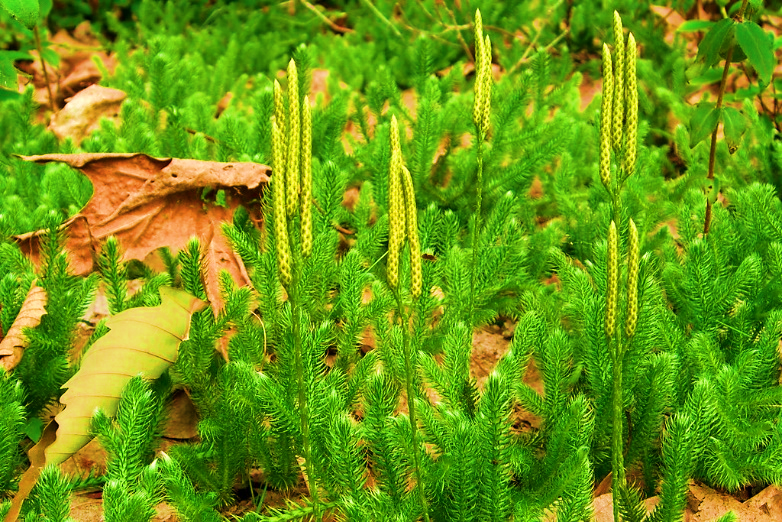
Which of the following is called club moss?
- A. Pteris
B. Lycopodium
C. Equisetum
D. Marsilea
- A. Pteris
Answer
486k+ views
Hint: The most widespread species of club moss that does not have flowers, and it is one of the types of earliest vascular plants. They have shallow roots and are found all over the world to the arctic region also.
Step by step answer:Club moss is also known as ground pine and belongs to the family Lycopodiaceae, which comprises several species of seedless vascular plants. They are native to tropical mountains and northern forests of both hemispheres. They are low evergreen herbs with needle-like or scale-like leaves. Many species have strobili or small leaves with a kidney-shaped spore capsule at its base. They are homosporous and are dependent on the associated fungus for their growth and development. Their sexual phase alternates with sporophyte and is formed after the process of fertilization. The most common members that belong to the family of Lycopodiaceae includes Huperzia, Lycopoiella, and Lycopodium.
Lycopodium is also known as creeping cedar. It is a flowerless, terrestrial, epiphytic, and vascular plant with branched, erect, and creeping stems having needle-like leaves that cover stems and thick branches. The leaves are known as microphylls that contain a single, unbranched vascular strand of the stem. They have kidney-shaped or reniform-shaped sporangia that contain only one kind of spores which developed either axially or adaxially. Their fertile stems have a club-shaped appearance.

Hence option B is correct.
Note: In 1753, Carl Linnaeus discovered the genus Lycopodium. They reproduce asexually by spores and have an underground sexual phase that produces spores and it alternates with the spore-producing plant in its life cycle.
Step by step answer:Club moss is also known as ground pine and belongs to the family Lycopodiaceae, which comprises several species of seedless vascular plants. They are native to tropical mountains and northern forests of both hemispheres. They are low evergreen herbs with needle-like or scale-like leaves. Many species have strobili or small leaves with a kidney-shaped spore capsule at its base. They are homosporous and are dependent on the associated fungus for their growth and development. Their sexual phase alternates with sporophyte and is formed after the process of fertilization. The most common members that belong to the family of Lycopodiaceae includes Huperzia, Lycopoiella, and Lycopodium.
Lycopodium is also known as creeping cedar. It is a flowerless, terrestrial, epiphytic, and vascular plant with branched, erect, and creeping stems having needle-like leaves that cover stems and thick branches. The leaves are known as microphylls that contain a single, unbranched vascular strand of the stem. They have kidney-shaped or reniform-shaped sporangia that contain only one kind of spores which developed either axially or adaxially. Their fertile stems have a club-shaped appearance.

Hence option B is correct.
Note: In 1753, Carl Linnaeus discovered the genus Lycopodium. They reproduce asexually by spores and have an underground sexual phase that produces spores and it alternates with the spore-producing plant in its life cycle.
Recently Updated Pages
The correct geometry and hybridization for XeF4 are class 11 chemistry CBSE

Water softening by Clarks process uses ACalcium bicarbonate class 11 chemistry CBSE

With reference to graphite and diamond which of the class 11 chemistry CBSE

A certain household has consumed 250 units of energy class 11 physics CBSE

The lightest metal known is A beryllium B lithium C class 11 chemistry CBSE

What is the formula mass of the iodine molecule class 11 chemistry CBSE

Trending doubts
State the laws of reflection of light

One Metric ton is equal to kg A 10000 B 1000 C 100 class 11 physics CBSE

Difference Between Prokaryotic Cells and Eukaryotic Cells

What is the modal class for the following table given class 11 maths CBSE

How do I convert ms to kmh Give an example class 11 physics CBSE

Give an example of a solid solution in which the solute class 11 chemistry CBSE




